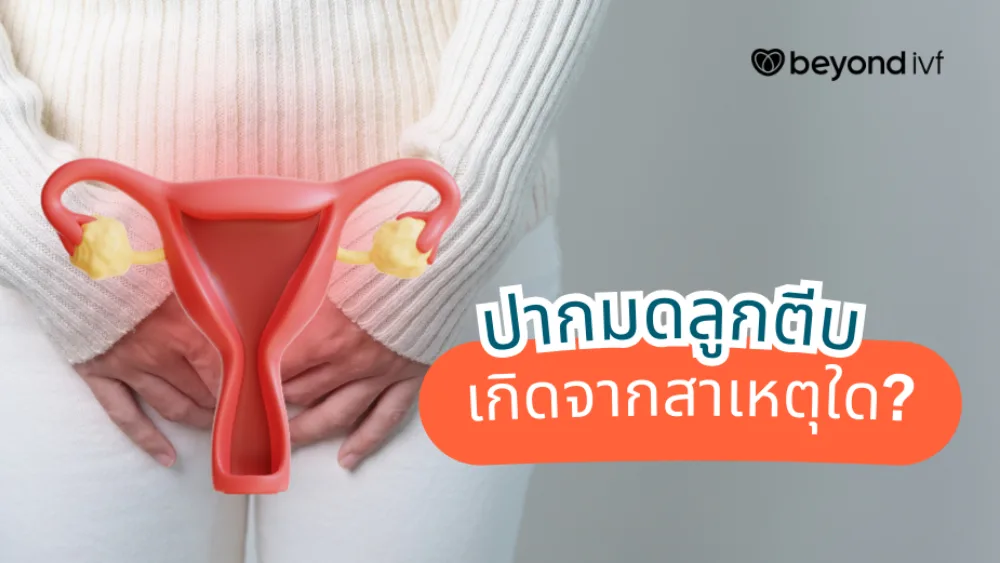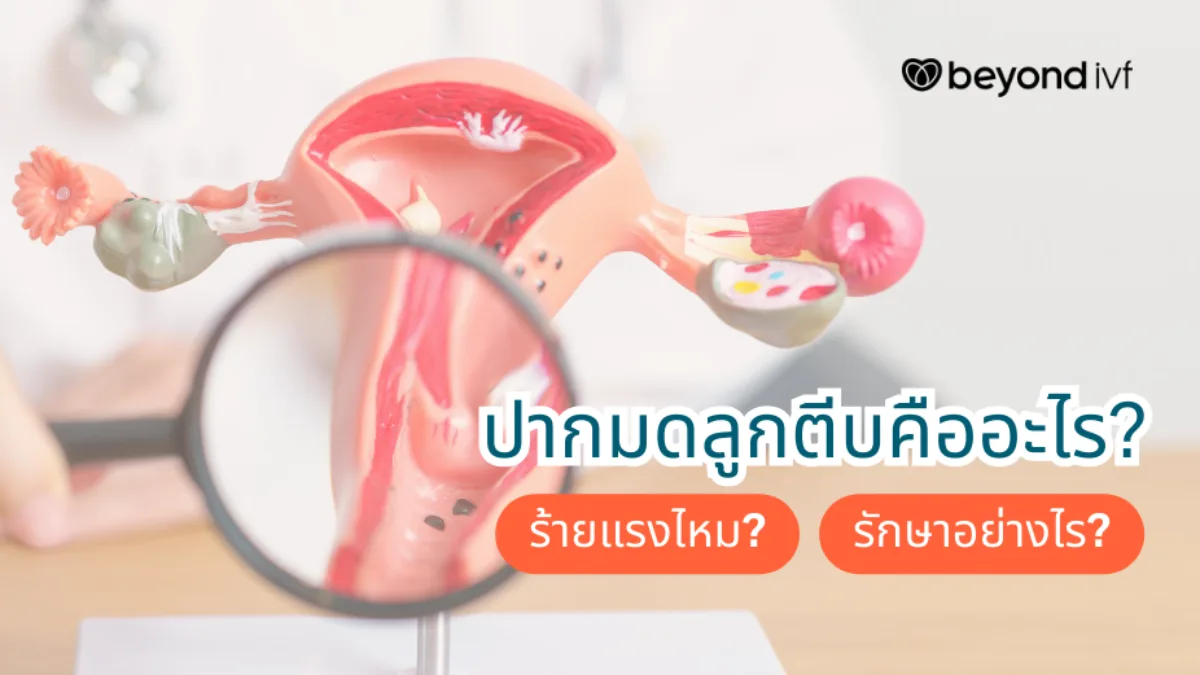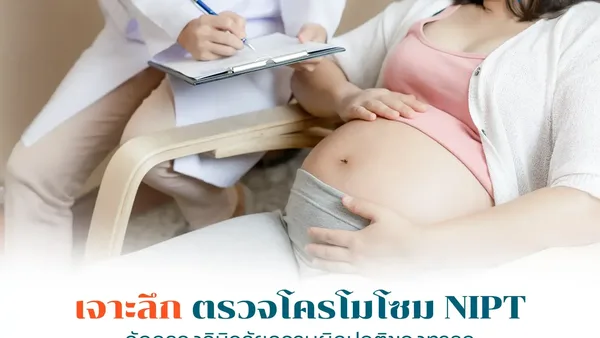Cervical stenosis may sound frightening, leading many people to wonder and feel anxious about whether they can still have children if they develop this condition, and how severe the symptoms may be. Is it necessary to completely remove the uterus? Today, we will address the causes and symptoms of cervical stenosis, as well as the treatment and prevention options.
Cervical Stenosis
Cervical stenosis is a condition that affects the female reproductive organs, where the cervix becomes narrowed or constricted, blocking the flow of fluids or secretions that would normally pass through this area. As a result, these secretions may accumulate within the uterine cavity. Patients with this condition may not experience any noticeable symptoms, while some may experience severe pain as well.
Symptoms of Cervical Stenosis
The severity of symptoms usually depends on how narrow the cervix is. Symptoms that can be observed include:
-
Absence of menstruation or irregularly light periods
-
Chronic lower abdominal pain
-
Inflammation in the uterine cavity with fever
-
A palpable mass-like lump in the pelvic area
-
Menstrual pain
-
Infertility, caused by the inability of sperm to reach and fertilize the egg.

What Causes Cervical Stenosis?
The causes of cervical stenosis can be divided into two main factors as follows:
Congenital Cervical Stenosis
Congenital cervical stenosis is a developmental abnormality of the female reproductive organs, where the uterus develops normally, but the cervix does not change or develop as it should.
Cervical Stenosis from Other Causes
If it is not congenital, cervical stenosis can develop due to several other factors, including:
-
Inflammation in the uterine cavity or cervix, leading to the formation of adhesions that cause narrowing of the cervix.
-
Abnormal growth of tissue that blocks the cervix, potentially leading to cervical cancer.
-
Radiation therapy for cervical cancer, which can cause the cervix to narrow.
-
Post-menopausal women, where decreased estrogen levels result in less cervical elasticity, causing the cervix to narrow.
-
Tearing of the cervical tissue due to medical procedures, such as hysteroscopy or dilation and curettage (D&C).
Cervical Stenosis and Infertility
Patients diagnosed with cervical stenosis often face infertility issues because sperm cannot travel to meet the egg at the end of the fallopian tube. However, nowadays, patients with cervical stenosis can treat infertility with assisted reproductive technologies, such as in vitro fertilization (IVF) or intracytoplasmic sperm injection (ICSI).
IVF (In Vitro Fertilization) involves extracting reproductive cells from both the male and female, mixing them together in a laboratory dish to allow fertilization, and then transferring the embryo back into the female’s uterus to achieve a normal pregnancy.
ICSI (Intracytoplasmic Sperm Injection) is similar to IVF but with a slight difference. ICSI uses a special technology where a needle is used to pick up a sperm cell and directly inject it into the egg for fertilization. The embryo is then cultured until it reaches the blastocyst stage (the most developed stage of the embryo) before being transferred back into the uterus to achieve pregnancy.

Diagnosis of Cervical Stenosis
Diagnosis of Cervical Stenosis
To diagnose whether a patient has cervical stenosis, the doctor will perform an examination in the pelvic region to test for and rule out cancer cells, based on the following symptoms:
The doctor will take the patient’s medical history, asking questions such as:
-
Does the patient experience chronic lower abdominal pain?
-
Does the patient have menstrual pain or irregular periods, such as missed periods?
-
Has the patient had any previous procedures on the cervix, such as a D&C (dilation and curettage) or radiation therapy?
-
Is there a palpable mass in the pelvic area?
The doctor will then perform a physical examination, checking internally to see if the cervix has any abnormalities or if there is a mass in the lower abdomen.
A biopsy of the uterine lining may be taken to rule out cancer cells by performing a Pap smear or HPV test.
Treatment of Cervical Stenosis
The treatment methods vary depending on the cause, severity of the condition, and the degree of cervical stenosis.
Dilation to Open the Cervix
This method is used when the patient has congenital cervical stenosis or stenosis that is not caused by any specific factor. A metal rod is inserted into the uterine cavity, and a dilator is used to gradually expand and open the cervix.
Laser Treatment
In cases where there is scar tissue blocking the cervix, the doctor may use a laser or electrical device to cauterize and remove the scar tissue that is causing the blockage or obstruction.
Hysterectomy
If the cervical stenosis is severe, causing significant pain, and cannot be treated by dilation, the doctor may discuss with the patient the possibility of a hysterectomy (removal of the uterus).
Self-Care Guidelines for Cervical Stenosis
If you find that you have symptoms of cervical stenosis, you can initially take care of yourself with the following methods:
-
Follow the advice and treatment plan provided by your doctor.
-
Maintain good hygiene of the genital area.
-
Avoid douching, as it can lead to infections and inflammation.
-
If you notice any unusual symptoms, consult a doctor immediately.
How to Prevent Cervical Stenosis
The way to prevent cervical stenosis is to avoid unnecessary medical procedures involving the cervix, such as receiving the HPV vaccine, undergoing a dilation and curettage (D&C), or avoiding douching.
Conclusion
Cervical stenosis is primarily caused by two main factors: congenital cervical stenosis and cervical stenosis resulting from other causes, such as medical procedures on the cervix or changes related to menopause. Symptoms that may occur include chronic lower abdominal pain, menstrual pain, difficulty with menstrual flow or absence of menstruation, a palpable mass in the uterus, and infertility. Some patients may not experience any symptoms, while others may have severe symptoms. If you notice any of these symptoms, it is important not to ignore them. You should see a doctor for a physical examination, diagnosis of the cause, and timely treatment.






